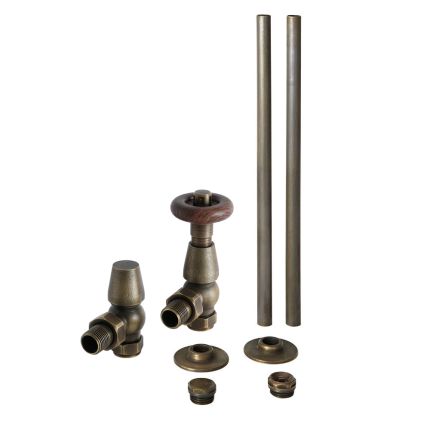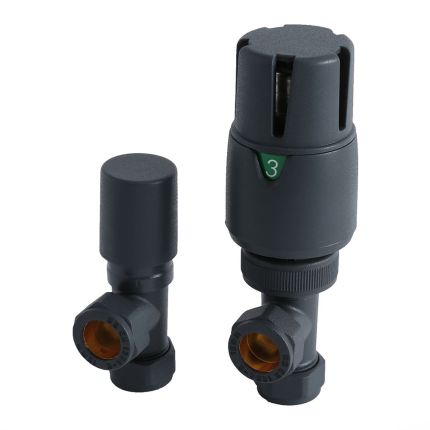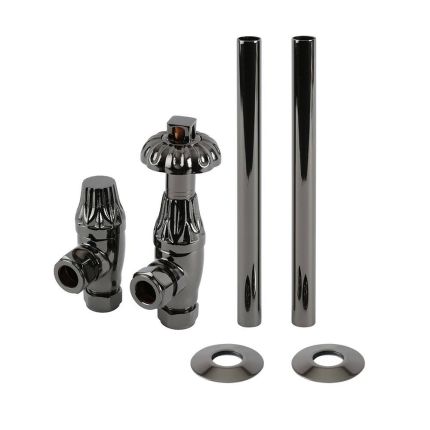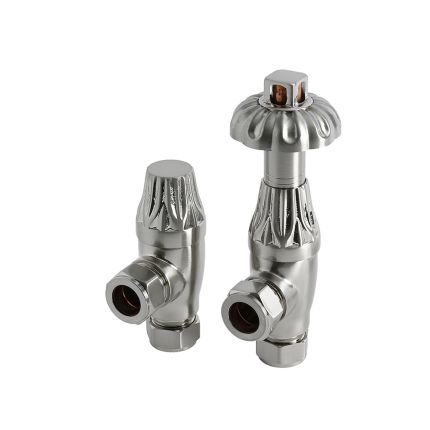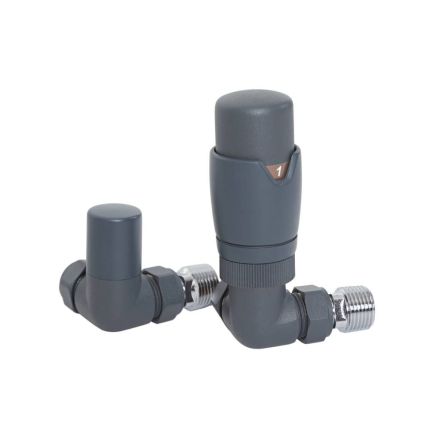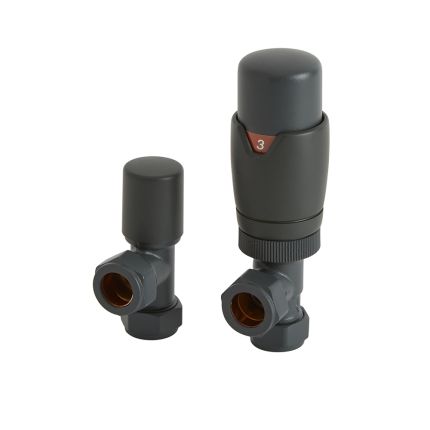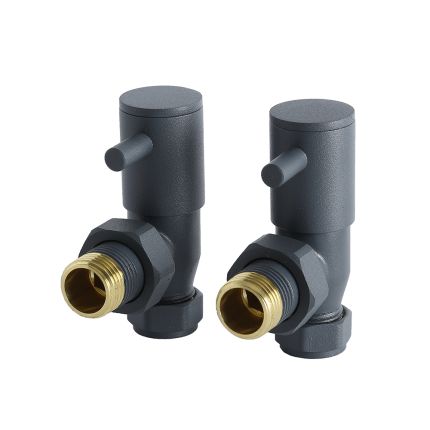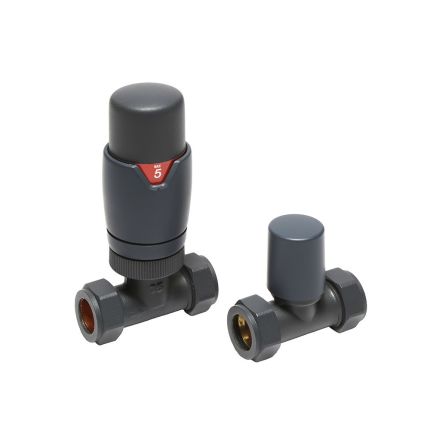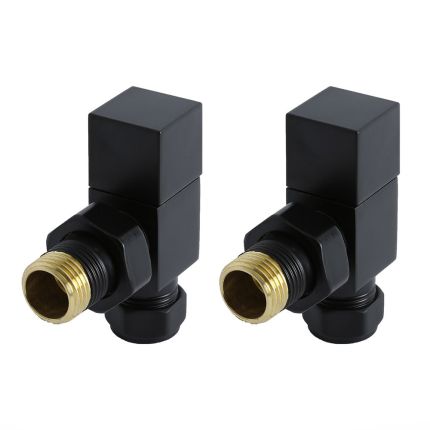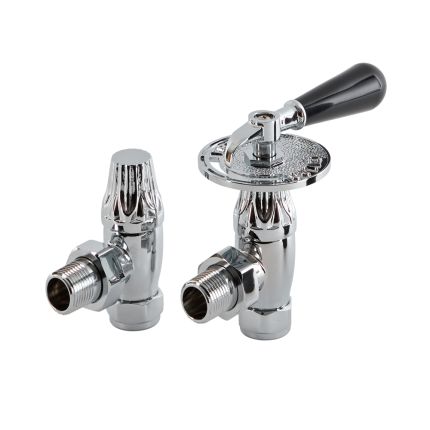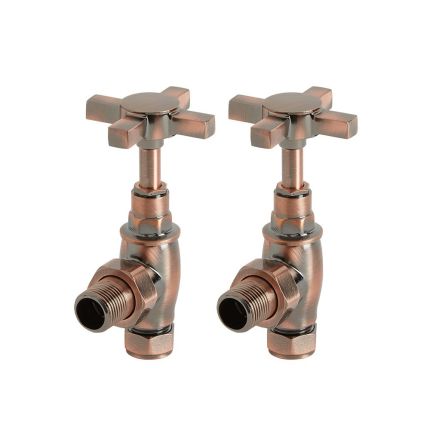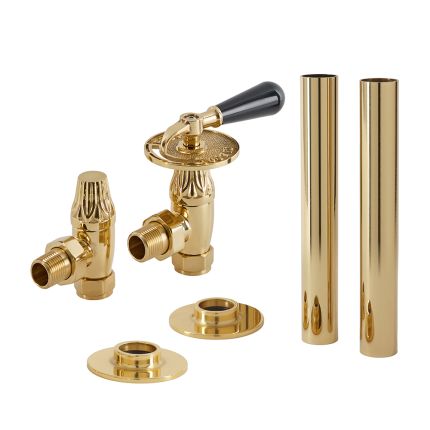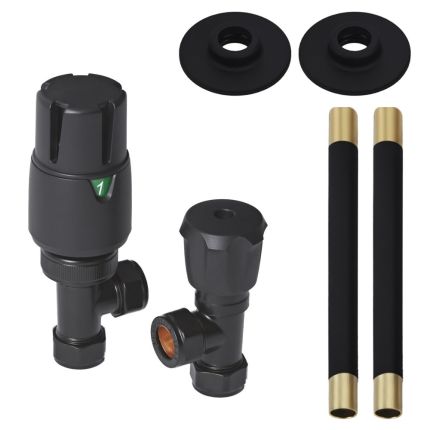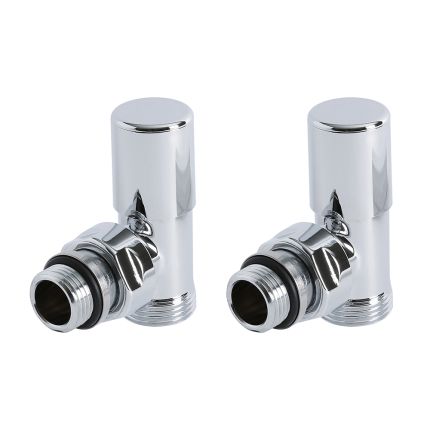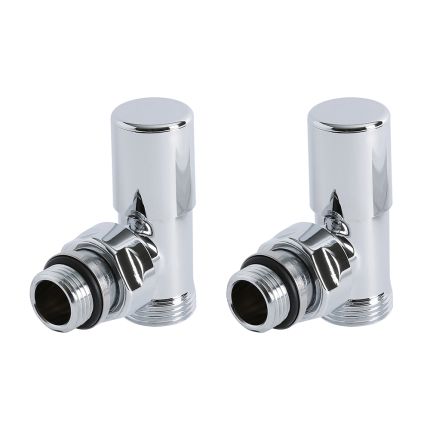Radiator Valves
Radiator valves are essential in allowing you to maintain control over the heat output of your new radiator or heated towel rail. Our collection includes a range of valve types in a selection of modern and traditional styles to help you add an important finishing touch to your new appliance, or to simply update your existing radiators.
Radiator valves are far more than just a functional item that helps to control your heating. They are on display all the time and you really can’t miss them. So as well as being an integral part of maintaining a constant and comfortable temperature, a radiator valve must look the part too! That’s why our extensive radiator valve collection features a range of colours, designs and finishes to help you to complete the look of your new appliance.
Types Of Radiator Valves
There are two main types of radiator valve available - Thermostatic Radiator Valves - also known as TRVs - and Manual Radiator Valves that work a little like a tap does.
TRVs control the temperature of your radiator by regulating the flow of the water running through it. Each thermostatic valve contains heat sensitive gel, wax or liquid that contracts and expands depending upon how high or low you set the dial. By manually adjusting the heat settings with the dial, you are able to cap the maximum temperature in your room and reduce your energy consumption.
Manual radiator valves tend to be smaller, do not have a dial, and offer a neat, minimalist look. Like TRVs, they control the temperature of the radiator and the water flow running through it, but do not have a dial that restricts the radiator to set temperatures. Instead, it works like an on-off switch and allows the user to turn off their radiator without turning off the central heating system.
Which radiator styles suit which radiators?
Both manual valves and TRVs come in angled, straight and corner fittings and are available in sleek modern styles or traditional designs to match your radiator and suit your interior design theme. The type of radiator valve and fitting you require will depend on the position of your pipework and where the inlets on your radiator are positioned.
To discover more about the different types of radiator valves available, and to learn about which radiator valve you might need, check out our expert guide on radiator valves .
Frequently asked questions about radiator valves
We understand that not everybody is a radiator expert and that choosing the best radiator valves for a new radiator is not always easy. So, below are some of the more common questions we get asked about our valves and all the answers you may need to select the ones you want!
What are the two valves on a radiator for?
Every radiator has two valves. One of them will control the amount of hot water that enters the radiator, while the other will control the level of heat that comes out of it. In essence, the valves on a radiator are not too dissimilar to taps - in that they give you control over the level of heat your radiator will emit.
For a more detailed insight into what the two radiator valves on your radiator are for, pay a visit to our radiator valve guide.
How will I know which radiator valves I need?
Understanding which valves will suit your appliance best can usually be determined by two things -
- The position of the pipework in your room
- Where the inlets are on your radiator or towel rail
Checking both of these things will allow you to determine exactly the type of radiator valve you need to buy.
If you’re still puzzled by your pipework, pay a visit to the guide to understand which radiator valves to buy!
Do I need manual or thermostatic radiator valves?
Whether you choose to install manual or thermostatic radiator valves is as much about personal preference and convenience as it is style and substance.
Manual valves are simply used to turn your radiator on or off. With a manual valve, the temperature of your central heating is controlled at your boiler or via your thermostat, and the individual manual valves will allow you to isolate radiators and control the flow of hot water into each radiator, as required. So, you can select at a room level whether a radiator should be on or off, as you see fit.
Thermostatic valves operate a little differently and can be left to their own devices to do so. TRVs work by using an expanding and contracting pin to either shut off or increase the level of hot water allowed into the radiator that they are fitted on. Once a set temperature has been reached, a TRV should stop water from entering the radiator until the temperature has lowered again, before repeating the process until the same set temperature is reached.
The main benefit of a TRV is how convenient it makes heating your home. You can select the desired temperature using your wall thermostat, set each individual TRV to a set temperature, and they will work together to ensure that you only get the heat you want and need from individual appliances.
Should I use TRVs in my bathroom?
It is not recommended to use a TRV in a bathroom or ensuite space, because the heat and steam created when you have a bath or shower doesn’t help the TRV to operate in the best possible way. Instead of it operating correctly and switching your radiator on, the residual heat from your shower steam can confuse the internal thermostat in the valve head and shut off your radiator or towel rail completely. So it’s best to avoid installing a thermostatic radiator valve in your bathroom.
Are TRVs a legal requirement for my heating system?
Believe it or not, but yes, they are - if you’re having your entire heating system replaced. From summer 2022, gas engineers who are replacing a boiler are now required to fit thermostatic controls to radiators that are not in the same room as the home’s thermostat. Although existing TRVs needn’t be replaced, if you’re having an entirely new heating system installed, you will need to install TRVs if you don’t have them already. This is part of new building regulations that state that all new and modified wet central heating systems must have a TRV fitted to every radiator. So, apart from the room where your thermostat lives, all your other radiators are required to have TRVs fitted to allow for more control over your home’s heating.
When will I need middle connection radiator valves?
If you are looking to buy a middle connection radiator it would follow that purchasing a new set of middle connection valves to go with it would be a good idea.
Although some middle connection radiators are compatible with standard manual and thermostatic radiator valves, to complete the look of a centrally connected radiator it’s best to select H-block radiator valves. These stylish valves help to save space at the side of your radiator by connecting at the bottom and middle of the appliance - creating a more streamlined look that is ideal for rooms with limited wall space.

